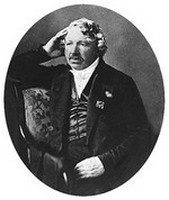
|
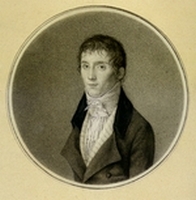
|
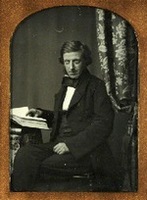
|
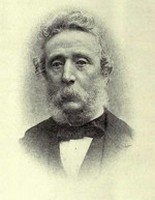
|
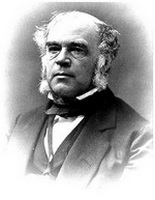
|
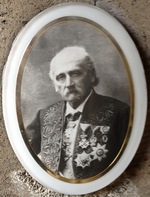
|
| Louis
Daguerre |
Joseph Nicephore Niepce |
Frederick Scott Archer |
Richard Leach Maddox |
John William Draper |
Moritz Loewy |
| The Parisian Showman who defied his father to
became a painter and who created the first Diorama theatre; and ended up being one of the pioneers
of the new 'Art' of Photography. He was also the first person to attempt
to photograph an astronomical object in 1839, when he failed to successfully image the Moon. Many
of his photographs were destroyed in a fire that same year. |
The French Inventor who is now generally credited as
having taken the 'First Photograph' when in about 1826 he obtained a Camera
Obscura image of a Courtyard taken from a window of his family's Chateau, 'Le
Gras' at Chalon-sur-Saone. Despite this his name is less well known than Daguerre, with
whom he collaborated until his early death in 1833. He had to buried at the Parish's
expense. |
The son of a Butcher from Hertford, whose invention of
the Wet Collodion Process dominated Photography for over 30 years, made the fortunes of many,
saved his Government millions of pounds, whilst he himself died in virtual poverty, leaving
a widow and three daughters. He is today virtually unknown. |
The son of a wealthy Tea Dealer from Bath, who trained as a Doctor, and in 1871 published
an account of the 'Gelatino-Bromide' or 'Dry Plate' Process,
which enabled man for the very first time to see on a Photographic Plate what the Universe truly
looked like. It was his work which made Deep Space Astrophotography
possible. |
The New York Professor of Chemistry born the son of
a Methodist Preacher from St. Helens in England, who his known as the father of Portrait
Photography and also became the 'First Astrophotographer' when he successfully
'captured' another World when he photographed the Moon in
1840. |
The Austrian Jew who fled his home to avoid
persecution and found a new home in Paris where he designed a revolutionary new telescope which
he used to create a magnificent photographic Atlas of the Moon. These images remained
unsurpassed for over 50 years, not until the Lunar Orbiter Probes of the
1960s. |
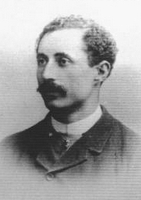 |
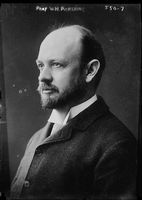 |
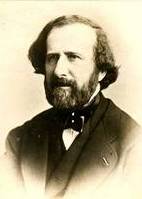 |
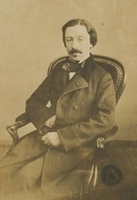 |
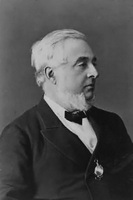 |
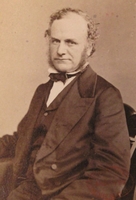 |
| Pierre Henri Puiseux |
William Henry
Pickering |
Hippolyte Fizeau |
Leon Foucault |
Warren De La Rue |
Jules Janssen |
| The Parisian Astronomer whose love of mountains was the inspiration for his
work. He like Moritz Loewy began his career as a Mathematician; but ended up working together to
do their finest work: the creation of the ‘Atlas Photographique de La
Lune’. A project which took over 16 years to complete and contains some of the
finest images ever taken of the surface of our nearest astronomical neighbour. |
The younger brother of the famous Harvard Professor of Astronomy, Edward
Charles Pickering. He was often ridiculed for his outlandish 'Lunatic' beliefs
such as the presence of migrating insects on the Moon; but who nevertheless was a great pioneer
of Astrophotography in his own right, producing in 1903 the first ever complete Photographic
Atlas of the Moon, some seven years before Loewy and Puiseux completed the publication of their
Atlas. |
He and Leon Foucault were two of the greatest physicists of the 19th
century. Their work on the development of terrestrial methods for the determination of a more
accurate value for the speed of light, paved the wave for many advances in all branches of
science. Together they obtained the first images of the Sun’s surface showing clearly the
presence of sunspots. |
One time friend and collaborator of Hippolyte Fizeau who fell out over their
differing views of how best to measure the speed of light. He is best remembered for the Pendulum
experiment which clearly demonstrated the rotation of the Earth on its axis. He died aged 48,
possibly due to Mercury poisoning resulting from his early work with the Daguerreotype
photographic process. |
The Channel Islander, who was the ‘Foremost Celestial
Photographer’ of his adopted country, England. In 1857 he produced the design for
the Kew Photoheliograph, the first telescope specifically built to photograph the Sun. In 1860 it
was taken by him to Northern Spain to successfully photograph the Solar Corona during the total
eclipse which took place on the 18th of July that year. |
He used photography to study the Sun and was one of the founders of Solar
Physics. In 1868, during an expedition to India to witness a Total Eclipse of the Sun, he noticed
the presence of an unknown line in the yellow part of the solar spectrum, which was later found to
be produced by a new and as yet undiscovered element, now known as Helium. This was the first
chemical element to be discovered on another world. |
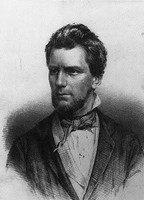 |
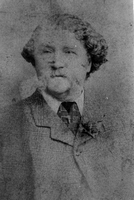 |
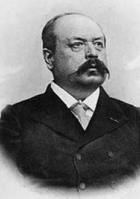 |
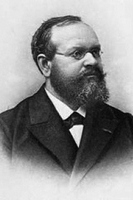 |
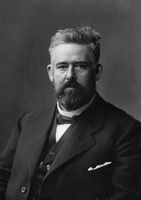 |
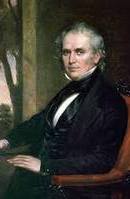 |
| John Adams Whipple |
William Usherwood |
Paul Henry |
Prosper Henry |
Max Wolf |
William Cranch Bond |
| The Bostonian Daguerreotypist who not only made significant contributions to
the development of early photography, but was also one of the great pioneers of
Astrophotography. It is likely that he was the first person to successfully image a planet,
when he photographed Jupiter in 1851.His planetary images preceded those of the Henry
Brothers by over thirty years. Sadly the photographic plates have not
survived. |
A miniature artist and commercial photographer from Walton-on- the-Hill,
Surrey, England, who took the first ever photograph of a comet when he captured Donati's
'Great Comet' tail and all, from nearby Walton Heath, Surrey on the 27th
September 1858, beating George Phillips Bond of the Harvard College Observatory by a night!
His success was due to the use of a portrait camera he used for taking 'wedding & baby'
photographs. The comet photograph taken by him has not survived |
The Henry Brothers were inseparable all throughout their lives. Together they
grew up as two of the greatest Astronomers of all time and were the first to take truly successful
images of the Planets. They also created some of the finest telescopes ever made, which were
without doubt the equal of those of the legendary Alvan Clark & Sons of Newburyport,
Massachusetts, USA. |
The younger brother who was finally separated, first through his marriage and
later his untimely early death in 1903 in a tragic climbing accident. Before then he worked with
his brother to obtain the first truly magnificent images of the 'belted' Jupiter
and rings of Saturn. Their work in using photography to create star charts was a major
contributory factor in persuading Amédée Mouchez to inaugurate the ill fated
‘Carte du Ciel’ project. |
The first person to discover an Asteroid by means of Photography when in
1891, he imaged No. 323 Brucia; which he named after Catherine Wolfe Bruce who later funded a 16-
inch Double Astrograph for the Heidelberg Observatory. Later, he helped Carl Pulfrich of the
optical firm of Carl Zeiss Jena in the development of the Stereo Comparator, a device used as an
aid to the discovery of asteroids and supernovae. |
William Cranch Bond and his son George Phillips Bond were the first two
Directors of the Harvard College Observatory, who with the help of John Adams Whipple and his
partner James Wallace Black, took the first photographs of stars; work which marked the beginnings
of Deep Space Astrophotography. It was at Harvard under the Bonds’ direction that the first
systematic experiments were carried out into the then new field of celestial
photography. |
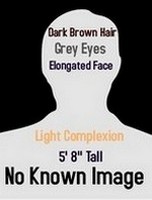 |
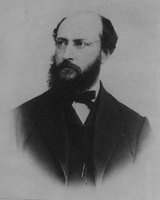 |
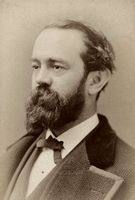 |
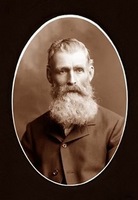 |
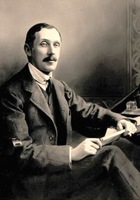 |
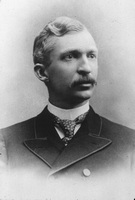 |
| George Phillips Bond |
Benjamin Apthorp Gould |
Henry Draper |
Isaac Roberts |
William Edward Wilson |
James Edward Keeler |
| The son of William Cranch Bond who
failed to successfully image the 'Great Comet' of 1858s. It is said that comets
are the portents of doom, and so it was with him. In the space of eleven months before and
after the appearance of Donati's Comet, he suffered the tragic deaths of his father, his
wife and his youngest daughter. He himself died of tuberculosis before he reached his
fortieth birthday. He was a true 'Catcher of the
Light'. |
An Astronomer of the ‘old
school’ who believed in the importance of measurement and position, preferring it
to the then new science of Astrophysics. Despite the death of two of his daughters and his best
friend in tragic accidents he during his time as the first Director of the Observatorio
Astronómico de Córdoba, Argentina measured and photographed the brightest stars in
many of the most well known Open Clusters in the Southern Hemisphere. |
On the 30th of September 1880, the New York Doctor,
Henry Draper took an iconic image of the ‘Great Orion’ Nebula (M42).
It is now one of the most famous and important photographs of all time. In doing so he became the
first person to successfully image a Nebula. At this moment Deep Space Astrophotography was truly
born. |
The son of a Welsh sheep farmer, who made his fortune
as a builder in Liverpool. In later life he dedicated himself to taking photographs of the many
wonderful objects to be found in the heavens. His images showed for the very first time what
many of these truly looked liked. He took at least 2485 photographic plates during the years 1883
to 1904. |
The Irishman who despite having no formal
training, made valuable contributions in Astrophysics. He was one of the first to measure
the surface temperature of our Sun. His value of just over 6500oC compares
reasonably well with today’s figure of around 5505oC.His image of
the ‘Great Orion’ Nebula is still to this day one of the
finest astronomical photographs ever taken. |
During the latter part of his career he used the 36-
inch 'Crossley' Reflector at the Lick Observatory in California to demonstrate
the great potential large silvered mirrored reflectors had in the conduct of astrophysical
research. The wonderful images produced by him with this telescope are a great testament
to his all too brief life. |
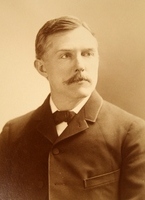 |
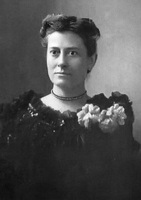 |
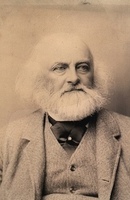 |
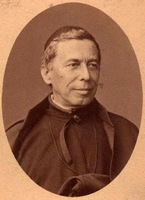 |
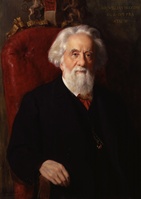 |
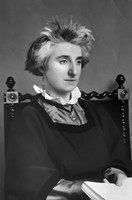 |
| Edward Emerson
Barnard |
Williamina
Fleming |
Lewis Morris Rutherfurd |
Pietro Angelo Secchi |
William Huggins |
Margaret Lindsay
Murray |
| The young 'Comet Hunter', who was
born in the slums of Nashville Tennessee during the American
Civil War and despite nearly dying of cholera and having virtually no education grew up
to become one of the world's greatest astronomers, and is forever to be remembered for his
magnificent images of our own Milky Way Galaxy. It was his early training as a
Photographer's Asssistant, which enabled him to become a Great
Astrophotographer. |
The Scottish Schoolteacher from Dundee, abandoned
pregnant and alone by her husband in Boston, USA, found work as the houskeeper to a Harvard
Professor of Astronomy; and who achieved everlasting fame by discovering on a Photographic Plate
the iconic 'Horsehead' Nebula - recently voted the most famous object in the
Heavens. She named her son Edward Charles Pickering after her benefactor and
saviour. |
Trained to be a lawyer like his father and
grandfather before him, but who decided to devote his life to science and was the first person to
try and classify stars according to their spectra. He was also the first person to build a
telescope suitable for photographic use only, which he used to take fine images of the Sun, Moon
and Stars. |
The Jesuit Priest who like Galileo two centuries
earlier, ran the risk of coming into conflict with his beloved Roman
Catholic Church and his Pope over his attempts to understand the Kingdom
of Heaven during his time as Director of the Del Collegio Romano
Osservatoria and God's Astronomer. His work on the Spectra of Stars showed that the Universe was
not perfect, but flawed. |
The son of a London Linen Draper and one of
the founders of modern Astrophysics. He and his wife Margaret Lindsay Murray conducted some of the
earliest research into the spectra of stars, and contributed greatly to our knowledge of the
physical structure of the universe based on a common set of chemical elements. |
Born in Dublin, the daughter of a Scottish
Solicitor, she grew up to become the wife of Sir William Huggins, who was 25 years her senior; and
who for over 35 years acted as his 'able assistant'.
It was largely due to her influence that Photography became an integral part
of their research on the spectra of planets, stars and nebulae. |
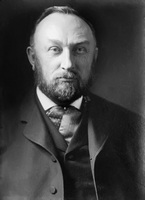 |
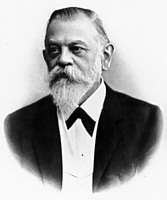 |
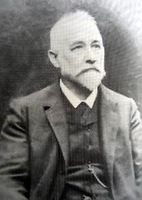 |
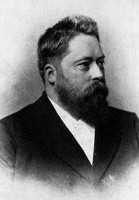 |
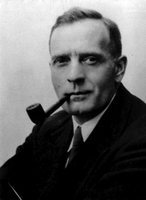 |
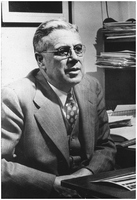 |
| Edward Charles
Pickering |
Hermann Vogel |
Wilhelm Oswald Lohse |
Julius Scheiner |
Edwin Powell Hubble |
Milton Lasell
Humason |
| He had three great talents; one was the ability to inspire himself to do
great things; the second to recognize the potential in women, to become great astronomers; and
lastly to persuade wealthy philanthropists to part with their money to finance his research. With
these talents and the women he employed, some of the finest astronomical research ever carried
out, was done under his supervision at Harvard College Observatory during the forty two years
he was its Director. |
He along with Wilhelm Oswald Lohse and Julius Scheiner were three of the
great pioneers of Astronomical Photographic Spectroscopy. They made significant contributions to
the then new science of Astrophysics. It was Vogel who first realized that photographs taken with
modest telescopes were the equal of visual observations made with even the largest of telescopes.
In 1899 he and Scheiner showed that the famous variable star Algol in the constellation of
Perseus was actually a binary system; and that its variability was not due to variations in the
star itself but by the presence of an unseen companion. |
He was a Chemist by training who worked with Vogel all his life, first at the
Bothkamp Observatory, then later at the Potsdam Astrophysical Observatory, providing his friend
with the technology to photograph the ‘rainbows of the stars.’ He
built one of the first cameras specifically dedicated to Astrophotography, which he used to take
images of the Moon, Planets and many well known Deep Space Objects. |
The son of a well known Cologne Artist who grew up to become a great
astronomer and who proved conclusively through the use of photographic spectroscopy that the
‘Great Andromeda Nebula’ was in fact an ‘Island
Universe’ made up of individual stars. He worked with Vogel to obtain the radial
(line of sight) velocities of stars by measuring the Doppler shifts in the absorption lines
of their spectra. |
Arguably the most famous astronomer of all time, who proved beyond all doubt
the existence of 'Island Universes' lying many millions of light years outside of
our own Milky Way. He is remembered today by the 'Great Space Telescope' that
bears his name. Had it not been for his death in 1953, he would that same year have received the
Nobel Prize for Physics and the first Astronomer to receive this award. |
Began life as as a Mule Skinner carrying equipment up a mountain to build
a 'Great Observatory'. He then fell in love with the daughter of its engineer,
who got him a job as a Janitor at the Observatory. His talents later secured him the job as a
night Assistant helping Edwin Powell Hubble to put a 'yardstick' on the size of
the Universe. He ended his career as a full time Staff Astronomer at the
Observatory he helped build. |
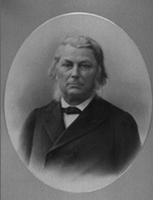 |
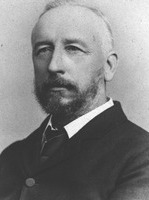 |
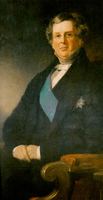 |
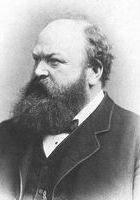 |
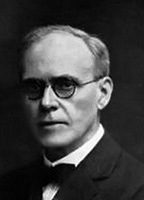 |
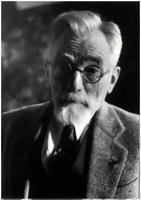 |
| Amedee Mouchez |
David Gill |
William Parsons |
Andrew Ainslie Common |
George Willis Ritchey |
Henri Chretien |
A Rear Admiral and a hero of France during the 'Siege of Le
Havre' in his country's war with the Prussians. He was a man of vision who recognized
the role of photography as an important tool to chart the heavens.To this end he instigated the
ill fated and over ambitious 'Carte du Ciel' project. His
faith was ultimately rewarded decades after his death, when data from the
project was successfully used in conjunction with that obtained from the HIPPARCOS Astrometric
Satellite.
|
Destined to be an Aberdeen clockmaker, who ignored his father's wishes to
become one of the great astronomers of the late 19th century,and was universally recognized as
such. He made significant contributions to many areas of astronomy, including the
measurement of the sun’s distance and the completion of a successful photographic survey of
stars in the southern hemisphere, known as the Cape Photographic Durchmusterung or CPD, which
listed the positions and magnitudes for 454,875 stars down to about magnitude 10.2 in the Southern
Hemisphere. |
The Irish Earl and the owner of a
Real 'Downton Abbey', who married an heiress for her money, but who fell in
love. He was the ‘Great Telescope’ Builder, whose 72-inch Reflector
was for almost three quarters of a century the largest telescope in the world; which he used to
‘afford us some insight into the construction of the material
universe’. It was he who first discovered with his ‘Leviathan of
Parsonstown’ the ‘Spiral’ nature of certain
nebulae. |
The son of a Surgeon, a pioneer in the construction of large silvered
mirrored telescopes. He showed the potential of such instruments to photograph the heavens
provided they were accurately driven and situated in a suitable observing location. Two of his
telescopes are still in operation today, the 36-inch ‘Crossley’
reflector at the Lick Observatory in California and the 60-inch
‘Rockefeller’ reflector at the Boyden Observatory, Bloemfontein,South
Africa.
|
He was not only one of the greatest designers of Telescope Optical Systems,
but more importantly he was a visionary whose ideas were too radical for the age in which he
lived; and which often brought him into conflict with the astronomical
'establishment'. It was his collaboration with the French optician Henri Chretien
that led to the optical design which now bears their name and which is the basis of almost all of
today’s new breed of ‘super telescopes’. |
The Parisian optician who began life as a Printer's Apprentice and who learnt
the power of Mathematics from the books he produced. This inspired him to become an astronomer,
who in later life would with his collaborator Ritchey, designed a telescope that is now beginning
to dominate both the backyards of the amateur astronomers and the observatories of the
professionals. He is the only astronomer to ever receive a Hollywood
'Oscar'. |
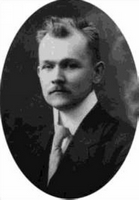 |
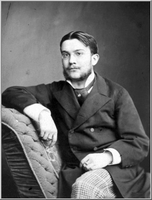 |
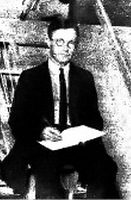 |
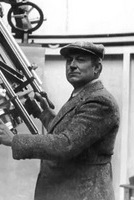 |
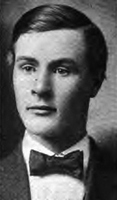 |
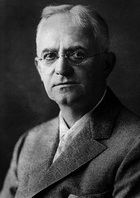 |
| Bernhard Schmidt |
Eugen Von Gothard |
Alfred Rordame |
Marcel De Kerolyr |
John Edward Mellish |
George Eastman |
| The fisherman’s son from Estonia, who blew off his right
hand as a young boy in an experiment with gunpowder that went horribly wrong, but nevertheless
lived to grind - literally single- handedly an optical system which is now aboard a Great Space
Telescope, that has been used to find other ‘Earths’ orbiting
distant stars - and whose sad fate was to be left to die unrecognized and alone in a German
Lunatic Asylum. |
On the 1st of September 1886, this Hungarian amateur astronomer using a
‘mass produced’ 10-inch reflecting telescope photographed for the
first time the central star of the famous ‘Ring Nebula'’ (M57) in the
constellation of Lyra. This photograph heralded the rise of the amateur in
Astrophotography. He was also one of the first scientists to study X-Rays. He took his first X-ray
photograph on the 23rd of January 1896, less than a month after the announcement of their
discovery by Wilhelm Conrad Röntgen. |
A musician from Oslo, Norway who first settled in in the mining town of
Eureka, Nevada earning his living its hotels and brothels. He then moved to the Mormon bastion of
Salt Lake City. There he became the first person to photograph features on the cloud shrouded
planet Venus, some six years before the 'Great Observatories'
did. |
A self-
trained French amateur, who in the 1930s took some of the finest astronomical images ever captured
of such iconic objects as the ‘Horsehead’ Nebula and the
‘Whirlpool’ Galaxy, with telescopes much smaller than used by many of
his professional colleagues.His photographs were the equal if not better than all who came before
him and many of those who followed him.
|
The American farm boy who grew up on his grandfather’s small
holding, three miles south of the village of Cottage Grove, Wisconsin and who in later life ground
himself a career as one of the foremost amateur telescope makers of the first half of the
20th century. It was with one of his telescopes, a 16-inch reflector that Alfred Rordame used to
photograph features in the clouds of Venus. |
The founder of KODAK was without doubt one of the greatest businessmen and
innovators the world has seen or ever likely to see. He was a man who cared as much for the well
being of people and in particular his employees, as much as he did for his company and the
products it sold. He tragically died by his own hand when shot himself on the 14th of March
1932 at the age of 77. |



















































